TLDR A critically ill boy experienced hair loss likely due to the stress of his medical treatments, but his hair regrew completely in 1.5 months.
The document reports a case of anagen effluvium (AE), a type of hair loss occurring during the growth phase of hair follicles, in a critically ill 2-year-old boy who experienced cardiorespiratory failure and required extracorporeal membrane oxygenation (ECMO). The child had a history of a burn injury, septic shock, and other complications, but testing for metabolic, mitochondrial, and genetic conditions was negative. Dermatological examination revealed diffuse alopecia with positive hair pull tests and light microscopy showed hair bulbs with appearances consistent with anagen hairs. The authors suggest that the combination of hypotension and hypoxia, followed by ECMO, may have caused DNA damage in the hair matrix, leading to apoptosis and AE. The patient's hair began to regrow within one week and had complete regrowth after 1.5 months. This case is unique as it suggests that systemic stress from the burn alone was insufficient to trigger AE, but the additional stressors leading to ECMO may have contributed to the hair loss. The document also discusses the pathogenesis of AE and differentiates it from telogen effluvium (TE), another form of hair loss.
32 citations
,
September 2013 in “Breast cancer research” A specific gene variant is linked to a higher risk of hair loss from chemotherapy in breast cancer patients.
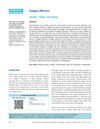 61 citations
,
January 2013 in “Indian Journal of Dermatology, Venereology and Leprology”
61 citations
,
January 2013 in “Indian Journal of Dermatology, Venereology and Leprology” Hair usually grows back 1-3 months after treatment for anagen effluvium, and children with Loose Anagen Hair Syndrome often improve by adolescence.
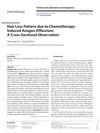 53 citations
,
January 2007 in “Dermatology”
53 citations
,
January 2007 in “Dermatology” Chemotherapy often causes patterned hair loss, with some scalp areas more resistant to hair loss than others.
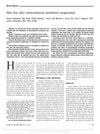 5 citations
,
July 2003 in “Pediatric Critical Care Medicine”
5 citations
,
July 2003 in “Pediatric Critical Care Medicine” Most patients experience temporary hair loss after ECMO, but it usually grows back within 6 months without treatment.
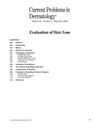 21 citations
,
May 1996 in “Current problems in dermatology”
21 citations
,
May 1996 in “Current problems in dermatology” Detailed patient history and physical exams are crucial for diagnosing hair loss.
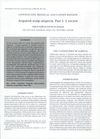 44 citations
,
November 1998 in “Australasian Journal of Dermatology”
44 citations
,
November 1998 in “Australasian Journal of Dermatology” Accurate diagnosis is key for treating different kinds of hair loss, and immune response variations may affect the condition and treatment results.
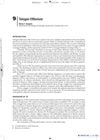 3 citations
,
February 2008 in “Basic and clinical dermatology”
3 citations
,
February 2008 in “Basic and clinical dermatology” Telogen Effluvium is a hair loss condition where treatment involves identifying and managing its triggers.
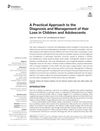 40 citations
,
July 2017 in “Frontiers in Medicine”
40 citations
,
July 2017 in “Frontiers in Medicine” Early and personalized treatment for hair loss in young people is crucial to prevent permanent damage and should include psychological support.
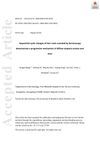 4 citations
,
October 2018 in “Experimental Dermatology”
4 citations
,
October 2018 in “Experimental Dermatology” Dermoscopy shows that diffuse alopecia areata progresses through specific hair growth stages.








